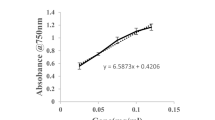Abstract
Recovery of high-added-value compounds from seafood waste is a promising area of research. Mussel byssus is a by-product from mussel production for human consumption, which is a potential source of collagen. The goal of this study was to extract collagen from the byssus of Chilean mussel using two methods (acidic and enzymatic) and determine their extraction yields. Acidic extraction was performed by immersing the byssus into distilled water adjusted to pH 4 with HCl at two extraction temperatures (60 or 80 °C) and times (6 or 24 h). For enzymatic extraction, first an enzymatic hydrolysis at two times (4 or 24 h) and pepsin/substrate ratios (1:50 or 4:50) was done. Then, the extraction was conducted at 80 °C for 24 h. All samples were analyzed for total protein, amino acid profile and molecular weight of collagen extracts. Extraction time and temperature had significant effects (p < 0.05) on protein and hydroxyproline contents after acidic extraction, where the higher level of process parameters (80 °C and 24 h) gave the highest protein (6 mg/mL) and hydroxyproline (7.6 mg/g protein) values. Using an enzymatic step before extraction, an increase in protein and hydroxyproline contents was observed, with maximum values of 31 mg/mL and 32 mg/g protein, respectively. The enzyme extraction presented the higher extraction yield, values ranging from 3.86 to 7.56 %. Electrophoretic patterns of collagen presented only β and γ bands, suggesting that this collagen is highly cross-linked at the telopeptide region. These results indicate that the Chilean mussel byssus is a good source of collagen that can be extracted for different purposes.





Similar content being viewed by others
References
T. Nagai, N. Suzuki, Food Chem. 68, 277–281 (2000)
J. Wasswa, J. Tang, X. Gu, Food Rev Int 23, 159–174 (2007)
V. Ferraro, B.I. Cruz, J. Ferreira, F.X. Malcata, M.E. Pintado, P.M.L. Castro, Food Res Int 43, 2221–233 (2010)
C. Garcia-Sifuentes, R. Pacheco-Aguilar, M. Lugo-Sánchez, G. Garcia-Sánchez, J.C. Ramirez-Suarez, F. Garcia-Carreño, Food Chem. 114, 197–203 (2009)
I.S. Arvanitoyannis, A. Kassaveti, Int J Food Sci Tech 43, 726–745 (2008)
J.M. Lucas, E. Vaccaro, J.H. Waite, J Exp Biol 205, 1807–1817 (2002)
S.L. Brazee, E. Carrington, Bio Bull 211, 263–274 (2006)
X. Qin, J.H. Waite, J Exp Biol 198, 633–644 (1995)
E.A. Foegeding, T.C. Lanier, H.O. Hultin, in Food Chemistry, ed. by O.W. Fennema, 3rd edn. (Marcel Dekker, New York, 1996), p. 902
P. Stevens (2010). In Food Stabilizers, Thickeners and Gelling Agents, ed. By A. Imeson (Blackwell Publishing Limited, Oxford, 2010), p. 116
D.A. Ledward, in Handbook of Hydrocolloids, ed. by G.O. Phillips, P.A. Williams (Woodhead Publishing Limited, Cambridge, 2000), p. 67
L. Vidal. Global and Chilean trends in mussel culture. (V International Conference AQUA Sur, 2010), http://www.aqua-surconference.cl/
Association of Official Analytical Chemists (AOAC). Official Methods of Analysis, 16th edn. (AOAC International, Washington, 1995).
P. Janssen, J. van Nispen, P. Melgers, H. van den Bogaart, R. Hamelinck, B. Goverde, Chromatographia 22, 345–350 (1986)
M. Ahmad, S. Benjakul, S. Nalinanon, Food Hydrocolloid 24, 588–594 (2010)
M.S. Bharati, K. Ramalingam, P Indian Nat Sci Academy 1, 23–26 (1989)
S. Mizuta, J. Hwang, R. Yoshinaka, Food Chem. 76, 53–58 (2002)
P. Zhou, J.M. Regenstain, J Food Sci 70, C392–C396 (2005)
J. Shon, J.H. Eo, S.J. Hwang, J.B. Eun, Food Sci Biotechnol 20, 99–106 (2011)
T. Nagai, E. Yamashita, K. Taniguchi, N. Kanamori, N. Suzuki, Food Chem. 75, 425–429 (2001)
A. Jongjareonrak, S. Benjakul, W. Visessanguan, T. Nagai, M. Tanaka, Food Chem. 93, 475–484 (2005)
H.Y. Liu, D. Li, S.D. Guo, Food Chem. 101, 621–625 (2007)
M. Ahmad, S. Benjakul, Food Chem. 120, 817–824 (2010)
Y.R. Huang, C.Y. Shiau, H.H. Chen, B.C. Huang, Food Hydrocolloid 25, 1507–1513 (2011)
E. Skierka, M. Sadowska, Food Chem. 105, 1302–1306 (2007)
S. Nalinanon, S. Benjakul, W. Visessanguan, H. Kishimura, Food Chem. 104, 593–601 (2007)
L. Wang, B. Yang, R. Wang, X. Du, Food Chem. 111, 683–686 (2008)
M. Sadowska, I. Kolodziejska, C. Niecikowska, Food Chem. 81, 257–262 (2003)
R. Duan, J. Zhang, X. Du, X. Yao, K. Konno, Food Chem. 112, 702–706 (2009)
P. Kittiphattanabawon, S. Benjakul, W. Visessanguan, F. Shahidi, Eur Food Res Technol 230, 475–483 (2009)
J.W. Woo, S.J. Yu, S.M. Cho, Y.B. Lee, S.B. Kim, Food Hydrocolloid 22, 879–887 (2008)
J.H. Muyonga, C.G.B. Cole, K.G. Duodu, Food Chem. 85, 81–89 (2004)
S. Benjakul, Y. Thiansilakul, W. Visessanguan, S. Roytrakul, H. Kishimura, T. Prodpranm, J. Meesane, J Sci Food Agr 90, 132–138 (2010)
D.P. DeVore, G.H. Engebretson, C.F. Schachtele, J.J. Sauk, Com Biochem Phys B 77, 529–531 (1984)
Acknowledgements
R.N. Zúñiga thanks CONICYT for financial support by means of the FONDECYT Project 11110156 Utilization of mussel byssus as an alternative source of collagen for the production of gelatin for food and pharmaceutical uses.
Author information
Authors and Affiliations
Corresponding author
Rights and permissions
About this article
Cite this article
Vallejos, N., González, G., Troncoso, E. et al. Acid and Enzyme-Aided Collagen Extraction from the Byssus of Chilean Mussels (Mytilus Chilensis): Effect of Process Parameters on Extraction Performance. Food Biophysics 9, 322–331 (2014). https://doi.org/10.1007/s11483-014-9339-2
Received:
Accepted:
Published:
Issue Date:
DOI: https://doi.org/10.1007/s11483-014-9339-2




